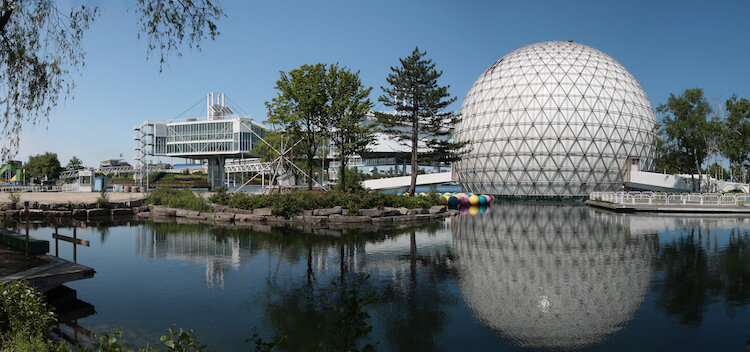The Future of Ontario Place Colloquium 2021, ‘Metabolism: Utopian Urbanism and Megastructures’
Tomoko Tamari was invited by the faculty of architecture, University of Toronto for the Future of Ontario Place Colloquium on 3 February 2021. The Future of Ontario Place Project is a joint initiative between World Monuments Fund, Architectural Conservancy Ontario, and the John. H. Daniels Faculty of Architecture and Landscape Architecture at the University of Toronto. Their campaign is working to make the case to members of the public, government officials, and design professionals that Ontario Place is not only an international Modernist heritage site reflective of key moments in Toronto’s history, but also an asset to future generations. In February, they launched the Future of Ontario Place Colloquium—four online sessions which work towards building a conservation management plan for Ontario Place which considers its social, historical, and ecological significance as well as its immense value as a public site.
Tomoko gave a talk in the first session, ‘Lessons from Utopian Megastructures’ (video below).
Moderator: Aziza Chaouni
Speakers: George Baird, Tomoko Tamari, Laurent Stalder
‘Metabolism: Utopian Urbanism and Megastructures’
Tomoko Tamari
Abstract
The Japanese modern architectural movement, Metabolism originated in the post-war 1960s. They represented a new conceptualization of architecture and the city landscape which embraced utopian futurism. Metabolism also provided the opportunity to re-construct the national image and to establish the social role of modern architects in Japan. Their architectural conception was based on megastructures and the total city plan. The paper explores the way in which Metabolism’s techno-utopian futurism might be understood through examining their problematic architectural philosophy and the social-cultural role of architects. Introducing Kenzo Tange’s ‘The Plan for Tokyo 1960’ and Kiyonori Kikutake’s ‘Tower Shaped Community’ (1958) and ‘The Marine City” (1958), the paper points out that these projects shared the idea of ‘liberation from the land’. The Metabolists through that the increasing mobility and rapid changes of the modern city leads to weaker ties between people and the land. People could escape from the conventional hierarchy and traditional rules of local communities and could create a new community in new artificial islands. There is, however, a fundamental contradiction between their philosophical concept and the practical design of the city. Although Metabolists embraces people’s autonomy in the modern city, as Zhongjie Lin (2010) rightly points out, the mega-scale of artificial land needed to be organized and controlled by a powerful centralized system. In this context, Kenzo Tange was particularly aware of the new opportunity for architects to become powerful social engineers and so hi called himself a’ social architect’. For contemporary Japanese architects, however, they no longer longed for the centralization of the city system and megastructures. They become much more concern with inhabitants and individual units which are largely subject to vernacular human activities, especially after ‘The Great East Japan Earthquake’ and ‘Fukushima nuclear power station incident’ in 2011. Toyo Ito, especially expressed his experience of the 2011 apocalyptic disaster made him re-consider ‘what architecture could be’ and ‘what architects could do.’ One of the responses was that Ito and his fellow architects created bases for those who lost their homes in order to recover communities and to rebuild the agriculture and fishery industries. This was a proposal for ‘Home for All’- a home for everyone. This was exactly the same idea, as Toronto Ontario Place (1971) in the ‘60s for people without summer cottages – a place for everyone, as Eberhard Zeidler said 50 years ago.


